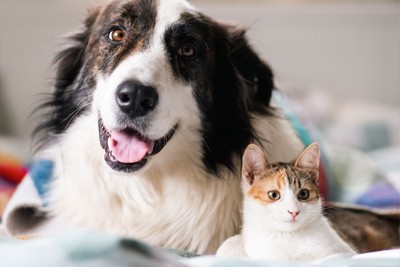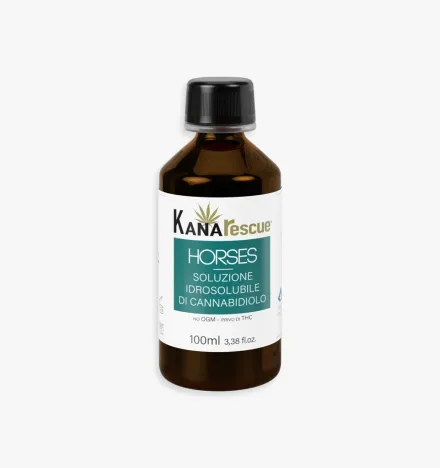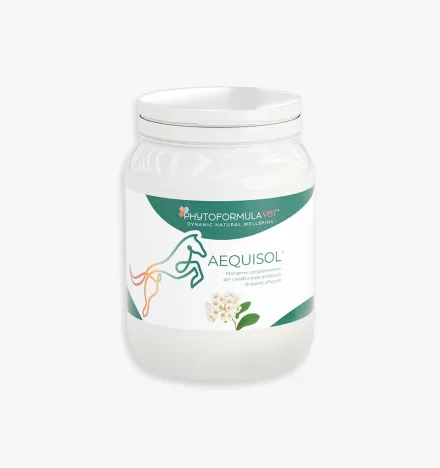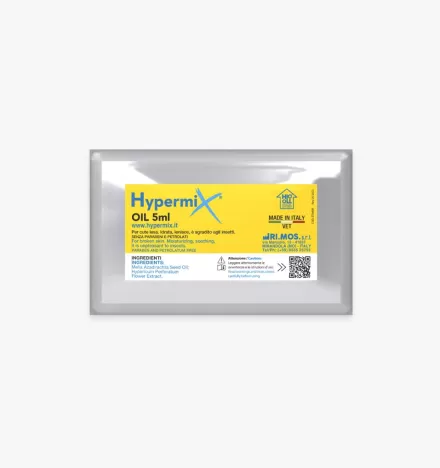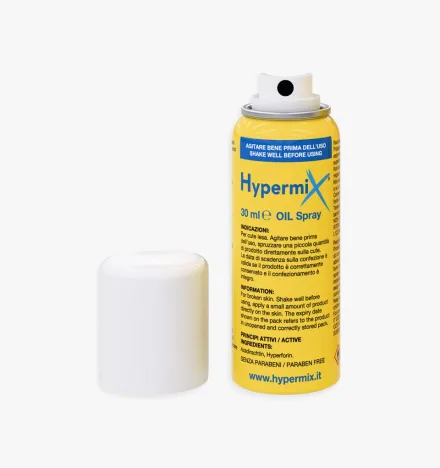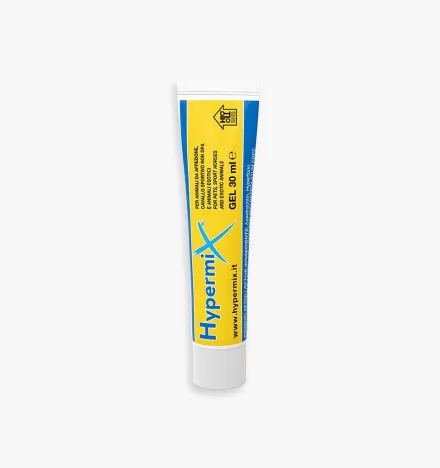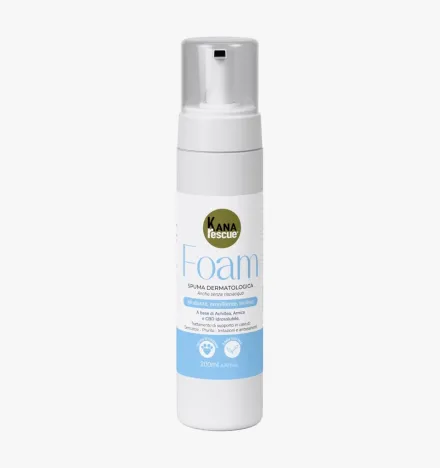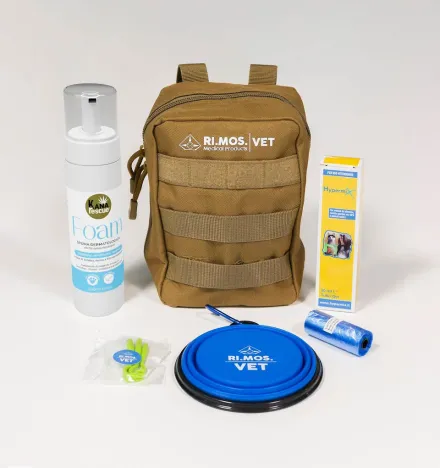Transport stress in animals: everything you need to know
Transportation stress is a common condition that can affect animals of all species during short or long journeys. This state of distress can adversely affect their physical and mental well-being, making it essential to recognize its signs and adopt strategies to minimize it.

TRANSPORTATION STRESS: RECOGNIZE IT, TREAT IT, PREVENT IT
Transportation can be a significant source of stress for animals, regardless of the duration or mode of travel. Symptoms can vary by species and individual, including restlessness, excessive vocalizations, loss of appetite, tremors or, in severe cases, respiratory and gastrointestinal distress. Recognizing and managing signs of transport stress early is essential to protect the physical and mental health of animals, making travel a safer and less traumatic experience for them and their caregivers.
WHAT IS MEANT BY TRANSPORTATION STRESS?
Transport stress is an uncomfortable condition that animals may experience during travel, regardless of the vehicle used. It is a physical and behavioral reaction that occurs when the animal is in a new environment with unusual and potentially disturbing stimuli, such as noise, movement, or space restrictions.
This condition not only affects the time of travel, but may begin as early as the preparations or continue after arrival at the destination, with varying effects depending on the species, character, and previous experiences of the animal.
Importantly, similar stressful situations can also occur in transport-related contexts, such as training or competition. In these cases, the animal must not only cope with the journey, but also adapt to a new, often crowded and noisy environment, and deal with a performance that requires concentration or physical exertion. These elements combined can amplify stress, with consequences ranging from altered behavior to decreased performance or health problems.
Transportation stress is important to recognize and address because, in addition to immediate discomfort, it can affect general well-being and, in some cases, physical and behavioral health.
CAUSES
The causes of transport stress can vary greatly by species and individual animal characteristics, but there are some common factors that contribute to this condition:
- Movement: animals perceive changes in balance and movement very sensitively. In horses, for example, the constant adjustment to keep stable during transport can cause muscle fatigue and increased cortisol, the stress hormone. In small animals such as rabbits and cats, sudden movements can be particularly destabilizing, increasing the sense of vulnerability.
- Noise and vibration: vehicles produce a range of noise and vibration that can frighten animals, especially those with sensitive hearing such as dogs and cats. For horses, the noise of a moving trailer can remind them of dangerous situations, triggering an escape response.
- Weather conditions: extreme temperatures and lack of ventilation are common causes of stress. Horses, for example, are particularly sensitive to poor air circulation in trailers, while rabbits can quickly suffer from heat stroke.
- Lighting: bright light or, conversely, poor visibility inside containers or trailers can cause anxiety. Cats and rabbits, animals more attached to safe, hidden spaces, may feel exposed in overly bright environments.
- Lack of familiarity: for many animals, the absence of familiar smells, objects or people during transport creates a sense of insecurity. In dogs, for example, the absence of the owner can trigger separation anxiety, while horses may show restlessness when separated from other members of the herd.
- Prior traumatic experiences: a trip associated with an unpleasant event (e.g., a visit to the veterinarian or a previous accident during transport) can profoundly affect the animal's behavior in future transports.
- Biological predisposition: some species or breeds are more sensitive to transport stress. Brachycephals (such as Bulldogs or Persians) may have respiratory difficulties exacerbated by stress. Animals that are elderly or have previous illnesses, such as joint or respiratory problems, are also particularly vulnerable.
- Pre-travel physical condition: an animal that is not in good physical condition or hungry/absorbed will be more prone to show signs of stress. For horses, poor pre-trip hydration can lead to colic, exacerbating the situation.
- Transport in groups or alone: social dynamics greatly influence. In horses, isolated transport can cause great distress because of their gregarious nature, while cats, which often prefer solitude, may become stressed if transported in close proximity to other animals.
SIGNS AND SYMPTOMS
Carriage stress can manifest itself in various ways in animals, affecting both the physical and behavioral spheres.
Common signs and symptoms include:
- Behavioral alterations: restlessness, aggression, stereotypies (repetitive and purposeless behavior), increased or decreased appetite, and alterations in the sleep-wake cycle.
- Skin problems: dermatitis, itching and other skin irritations, often related to allergic reactions or self-trauma caused by stress.
- Gastrointestinal disorders: diarrhea, vomiting, excessive salivation, and weight loss, resulting from stress-induced metabolic and hormonal changes.
- Immune system impairment: increased susceptibility to infection and disease due to immunosuppression caused by stress.
- Muscle and skeletal problems: pain, inflammation, muscle stiffness, and, in severe cases, conditions such as carrier tetany, characterized by tremors and motor difficulties.
- Respiratory disorders: increased respiratory rate, dyspnea, and, in some cases, development of respiratory disorders such as porcine stress syndrome (PSS).
It is critical to closely monitor animals during and after transport to detect these signs early and intervene with appropriate preventive or therapeutic measures.
How various major species react to transport
Each animal reacts differently to travel:
- Farm animals (sheep, goats, cattle, pigs): these animals are often transported in groups, but overcrowding and poor ventilation conditions can cause severe stress, leading to respiratory problems and increased infectious diseases. Farm animals are also prone to muscle fatigue during long journeys, especially if there are insufficient stops for hydration and feeding.
- Dogs: They are social animals and generally more adaptable than other species, but they suffer from separation anxiety and stress related to changes in routine. During transport, they may exhibit nervousness due to noise, sudden movements or the absence of the owner. Some dogs are prone to motion sickness (motion sickness), which combines physical and psychological discomfort, with symptoms such as hypersalivation, vomiting, and restlessness.
- Cats: known for their territoriality, they tolerate changes in environment very poorly. Travel is often a traumatic experience, especially if they have not been accustomed to the carrier or if associated with unpleasant events, such as veterinary visits. Exposure to loud noises, confined spaces, and unfamiliar smells can cause extreme fearful reactions, even to the point of immobilization or display of aggression.
- Rabbits: prey by nature, they react particularly sensitively to any situation perceived as threatening. Transporting them in unsuitable or noisy containers can trigger panic reactions, such as accelerated beating, immobilization or frantic attempts to escape that risk injury. Their delicate anatomy also makes them vulnerable to respiratory or gastrointestinal problems, exacerbated by prolonged stress. In the rabbit, the repercussions of prolonged severe stress can have a fatal outcome.
- Horses: their gregarious nature makes them vulnerable to separation from the herd, while confinement and constant movement during travel require constant balance adjustment, which can cause muscle fatigue and increased stress. Frequent travel, such as those related to competitions, can have cumulative effects on their well-being, contributing to physical problems such as transport colic or dehydration.
- Domestic birds: birds, such as parrots or canaries, are extremely sensitive to environmental changes and noise. Their delicate respiratory system makes them vulnerable to temperature changes or poor ventilation during transport. It is always advisable to transport birds in atraumatic transport cages covered with a dark breathable fabric to lower their agitation level and make them feel safe.
- Rodents: animals such as hamsters, guinea pigs and mice suffer from transport-related stress because of their shy nature and need to feel protected. Sudden noises, sudden movements and inadequate containers can cause a strong sense of fear, manifested through immobilization or frantic behavior. Prolonged stress in rodents can cause gastrointestinal problems, such as intestinal blockages or immunodepression.
- Reptiles and amphibians: these animals are particularly vulnerable to changes in temperature and humidity, which can pose a danger during transport. For example, a turtle transported in an environment that is too cold may experience a slowdown in metabolism. In addition, sudden movements and the absence of adequate hiding places can cause panic behavior in reptiles and amphibians accustomed to a stable, controlled environment.
Each species has specific needs that must be carefully considered to minimize stress and prevent physical and psychological consequences during transport.
PREVENTION
To prevent transport stress in animals, a number of practical and targeted measures need to be taken that take into account their specific needs. Here's what to do:
- Gradually accustom the animal to the carrier or transport, with short adaptation sessions.
- Have a veterinary checkup to check health status and get helpful advice on any calming or supplements.
- Ensure an adequate, spacious and well-ventilated carrier, trailer or cage.
- Reduce noise and visual stimuli, such as by partially covering cages or carriers.
- Provide familiar objects, such as blankets or toys, to create a reassuring environment.
- Monitor temperature and humidity carefully, avoiding sudden changes.
- Ensure regular stops for hydration and rest, if possible.
- Transport the animal in a stable environment, avoiding sudden movements or unsafe positioning.
- Monitor the animal's behavior during the trip to identify signs of distress.
With these precautions, it is possible to significantly reduce the discomfort associated with transport and ensure the animal's well-being.
NATURAL REMEDIES
The use of natural remedies can help reduce transport stress in animals by providing support in a gentle and safe way. Some of the most common remedies include:
- Cannabidiol (CBD), extracted from Hemp, known for its relaxing, anti-inflammatory and anxiolytic properties; particularly suitable for dogs and cats, but to be administered only under veterinary advice to ensure proper dosage.
- Valerian, known for its relaxing and anxiolytic properties.
- Hawthorn, useful for reducing agitation and improving relaxation.
- Chamomile, with calming effects and suitable for different animal species.
- Bach flowers, such as Mimulus, to reduce specific fears, or Star of Bethlehem, to relieve shock and emotional distress.
- Lavender essential oils, to be diffused or applied carefully to promote relaxation.
- Magnesium or Tryptophan supplements to increase resilience to stress, particularly suitable for horses and large animals.
- Synthetic pheromones, available in sprays, collars or diffusers, to convey calm and safety.
Before using any natural remedy, it is always advisable to consult a veterinarian to assess suitability and dosage, thus ensuring the safety and well-being of the animal.
An aid for horses is Aequisol, from RI.MOS. VET, a complementary feed made from medicinal plants, such as Spirea ulmaria, Curcuma longa, Ribes nigrum, Aloe ferox and Milk Thistle. Thanks to its antioxidant, depurative and soothing properties, Aequisol is ideal for supporting the joint and muscle health of the horse, while also relieving stress, especially that resulting from work or transport.
MEDICAL TREATMENTS
When natural remedies and preventive measures are not sufficient, medical treatments can be used to help animals manage transport stress. These treatments should always be prescribed and monitored by a veterinarian, as efficacy and safety vary depending on the species, size and health condition of the animal.
Among the most common treatments are:
- Light sedatives, which reduce anxiety without unduly impairing the animal's alertness. They are especially useful for long trips or for particularly anxious individuals, such as horses that are difficult to load or cats that cannot tolerate a carrier.
- Anxiolytic medications, such as gabapentin for dogs and cats, can help decrease agitation and ease transportation, providing greater peace of mind.
- In more severe cases, stronger sedation may be used, especially suitable for large animals such as horses, during long journeys or critical situations. These drugs require careful administration and monitoring to avoid unwanted side effects.
The use of medical treatments should be considered very carefully, reserving them only for necessary cases and under strict veterinary supervision to ensure the animal's maximum well-being during transport.
HEMP AND CANNABIDIOL (CBD): NEXT-GENERATION PLANT-BASED TREATMENTS
In recent years, the use of natural ingredients such as Cannabidiol (CBD) and Hemp has revolutionized the treatment of issues in animals. This new generation of products, based on plant-based ingredients, not only soothes symptoms but promotes profound and lasting improvement in skin health. With advanced formulas and carefully selected ingredients, the Kanarescue® line stands as a natural and effective support to address itchiness, skin irritation and localized redness.
An excellent example is Kanarescue® Horses (Water Soluble Solution for Horses): a water-soluble solution for horses based on Cannabidiol, enriched with Aloe Vera, Peppermint, Sage and Grapefruit seed. This product offers a calming and purifying effect to soothe and prevent stressful situations, as well as support the immune system and regenerate tissues.
Kanarescue® Horses is particularly good for addressing post-traumatic stress disorder and ensuring your horse's maximum well-being in a natural and effective way.
GENERAL TIPS FOR THE TREATMENT OF TRANSPORT STRESS IN ANIMALS
Treating transport stress in animals requires a comprehensive approach, combining practical accouterments and individualized supports. It is critical:
- Carefully observe the animal's behavior to recognize early signs of distress, intervening with natural or therapeutic remedies as needed.
- Ensuring a comfortable environment with adequate space, ventilation and noise reduction is essential to minimize discomfort during travel.
- Good transport training, started with gradual, positive sessions, helps animals become familiar with the experience, significantly reducing the risk of stress.
- Prepare a checklist in advance, making sure you have suitable carriers or trailers, familiar accessories and, for some species, specific supports such as pheromones or natural supplements.
- Offer support through an adequate diet, possibly supplemented with complementary feeds such as Aequisol or functional oils such as Kanarescue Horse, to support the animal's physical and mental well-being.
- Maintaining open communication with the veterinarian is essential for tailoring treatment strategies, ensuring the animal's well-being before, during, and after travel.
Products to treat Transportation Stress
Do you have a question?
Our team of experts has an answer for you!
What steps should be taken during the healing phase to prevent the animal from licking or damaging the wound?
During the healing phase of a wound, the animal may experience itching caused by normal healing. In such cases, specific devices such as Elizabethan collars, inflatable collars, breathable containment bandages, and braces can be used to avoid self-traumatization due to scratching, licking, and pecking.
What are the stages of wound healing?
There are three stages of wound healing:
Stage 1: exudative or inflammatory or also called cleansing stage
Stage 2: granulation or proliferative phase (granulation tissue formation)
Stage 3: epithelialization or regenerative phase (scar formation and epithelialization)
Highlights
Choose the beneficial properties of our effective and safe plant-based products for the well-being and care of your pets.
Subscribe to the Newsletter, for you 10% discount!
Stay up-to-date with all the latest news, promotions and exclusive offers from RI.MOS. VET.

